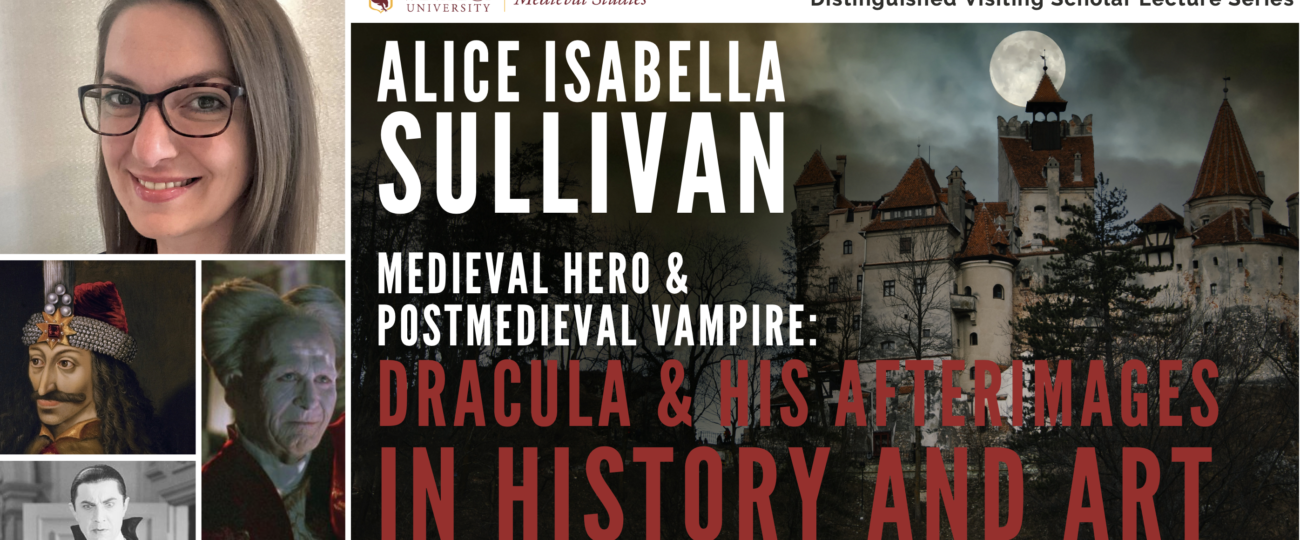Winthrop University has invited Dr. Alice Sullivan, an expert on Dracula, to speak in Dina’s Place about her research on the connections between Dracula and the historic figure Vlad III and how Dracula is portrayed in the media.
Sullivan is currently an assistant professor of medieval art and architecture and the director of graduate studies at Tufts University. She received her Bachelor of Arts from Bowdoin College in Brunswick, Massachusetts, and her Master of Arts in the Williams College Graduate Program in Art History. She then went straight into a seven-year Ph.D. program in art history at the University of Michigan – Ann Arbor.
“It’s been a long, and sometimes difficult, journey but very worthwhile and exhilarating at times,” Sullivan said. “I learned a lot along the way, not only about my research but about myself.”
Sullivan’s research focuses on the art, history and culture of medieval Eastern Europe. This area of study does not exist as a field of study at many Anglo-American universities.
“This is due to the rigid and artificial geographical and temporal parameters of art history as a field of study, which has long excluded Eastern Europe from the narratives,” Sullivan said.
When starting her research, Sullivan likes to begin by examining the visual evidence first because she thinks it is fascinating. After studying the image or object, she then moves on to reading primary and secondary sources to figure out what her art historical contribution might be.
“In my travels, I tend to go to the church, monastery, or museum first, and then to the archive and library,” Sullivan said. “I have learned that I get more out of the textual sources that I study once I have a good grasp of what my visual evidence looks like and the kinds of questions I find most relevant in exploring.”
As a result of her research, Sullivan has created an art history course that presents the history, art, and culture of medieval Eastern Europe in a way that is interesting to students.
“I have been thinking about how best to bring this content to the attention of my students, and soon realized ‘What better popular figure than Dracula through which to explore Eastern European history, art, culture, and myths?’. So, I developed an art history course that looks at Eastern Europe from the 15th century onward through the fascinating figure of Vlad III Tepes (1431-c. 1476), his brutal reign, the historical context in which he lived, as well as his multiple interpretations as Dracula in 20th- and 21st-century novels, films, TV shows, plays, and comic books,” Sullivan said.
Sullivan has worked on various collaborative projects and has most recently worked on her most recent work with her colleague Maria Alessia Rossi. In 2019, the two scholars launched North of Byzantium “which is an initiative that explores the rich history, art, and culture of the northern frontiers of the Byzantine Empire in Eastern Europe between the 13th and 17th centuries,” Sullivan said.
Sullivan has also been a part of the launch of Mapping Eastern Europe “which is to promote study, research, and teaching about the history, art, and culture of medieval Eastern Europe among students, teachers, scholars, and the wider public,” Sullivan said.
She has also launched a magazine called Medieval World: Culture and Conflict this year “which aims to bring history and art of life through short, accessible, and richly illustrated articles written by leading scholars and early career researchers,” Sullivan said.
“In light of the current war in Ukraine, I dedicated the second issue to the history, art, and culture of the kingdom of Kievan Rus, which covered parts of modern Ukraine,” Sullivan said. “In my opinion, good scholarship should be available and accessible to students, teachers, scholars, and the general public in various forms.”
This magazine is available in print and online every two months and is distributed worldwide.
At the event, students can expect to see paintings, prints, drawings, manuscripts, illuminations and architecture, along with movies, novels, and cartoons.
“Through the lecture, I intend to take the audience on a historical, visual, and literary journey that will help untangle the complicated relationship between Dracula – a figure with popular appeal to modern audiences – and the historical figure who inspired him – often misunderstood, misinterpreted, or relegated to the margins of inquiry,” Sullivan said. “ I aim to demonstrate that the historical Dracula has two “afterlives” – one in the Western context and the popular imagination as a monster and vampire; and the other in the Eastern European, and especially Romanian context, as a historical and national hero.”
The event will take place in Dina’s Place on Thursday, Oct. 27 at 6:30 p.m. Students will be able to receive cultural event credit if they stay the entirety of the event.




